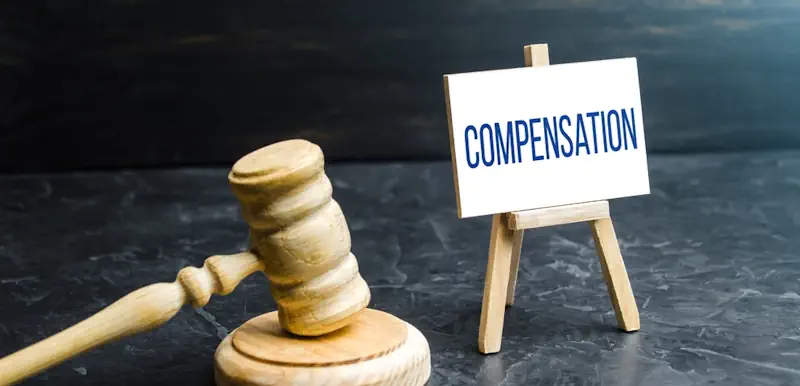- Your Right to Sue for Personal Injury in Queensland
- The Basics of Negligence Claims
- Determining if a Person Owes a Duty of Care
- Identifying a Breach of Duty
- Proving Causation and Harm
- Common Defences Against Negligence Claims
- The Process of Suing for Negligence
- Vicarious Liability in Negligence Claims
- Can I Sue for Negligence?
- Suing for Personal Injury Damages FAQs
Have you suffered a personal injury from a slip on a wet floor or due to medical malpractice? If yes, you will likely want to know: Can I sue for negligence? The simple answer is yes; when there is
- an owed duty of care
- a defendant’s breach
- and a related financial loss
When suing for negligence, you must know how to make a personal injury claim successfully. This knowledge will help you claim compensation with less stress and hassle. So, continue reading to learn more about the law relating to liability, negligence, and malpractice.
Your Right to Sue for Personal Injury in Queensland
In general, you have the legal right to sue for a personal injury and claim monetary compensation when another party fails to take reasonable steps to ensure your safety. In most circumstances, a person or party must take reasonable care to prevent harm from occurring to others.
When something goes wrong, the other party can be held liable when:
- A person slips on a wet floor
- A doctor who fails to provide the expected standard of care
- A person is injured at work
- A duty of care exists between a motorist and other road users
- Suffers a loss due to professional negligence
- Any other situation that results in personal injury and financial loss
Fortunately, the Civil Liability Act 2003 and common law protect the right to lodge personal injury claims. The legal guidelines and criteria for assessing if one party owes a duty and has been negligent are found in common law principles originating from earlier court rulings.
Do I Have a Valid Claim?
The Basics of Negligence Claims
Although it may initially seem simple, negligence carries significant legal implications. At its core, negligence occurs when a reasonable person fails to exercise a level of care that the other party would in the same circumstances. Due to this failure, the other party suffers a psychological or physical injury and a loss.
All negligence claims rest on four fundamental pillars:
- Duty of care
- Breach of duty
- Causation
- Harm
The primary remedy for negligence is compensatory damages, which provide financial relief to the injured party for economic and non-economic losses. So, if you are considering making a claim, seeking advice from an experienced personal injury lawyer is your best chance of receiving fair compensation.
It’s free to know if you can claim >
Determining if a Person Owes a Duty of Care
The’ duty of care’ concept is at the heart of every negligence case. This legal obligation requires everyone to act with due diligence to prevent causing foreseeable harm to others. But how do you know when a duty exists? And to whom is this duty owed?
What is a Legal Duty?
Essentially, a legal duty is a responsibility to prevent causing harm to others. This obligation emerges from the relationship or situation between the relevant parties. The relationship between the claimant and the defendant helps the court determine whether a particular duty exists in a negligence lawsuit.
However, there is no automatic duty of care for every person toward others. For an obligation to exist, a relationship must have a sufficient degree of closeness or proximity.
Common Examples of Duty-of-Care Relationships
Relationships that commonly result in a duty of care include the following:
- Property owners have a responsibility to keep their premises safe for all users.
- Landlords owe a safety duty to their tenants.
- Professionals like lawyers, accountants and financial advisors must provide competent advice and services.
- A doctor and patient relationship, as well as other medical professionals.
- Manufacturers must maintain safe product standards
- Employers must provide a safe working environment for their employees
In Australia, an exception applies to ‘Good Samaritans’ when they act in good faith. Such people are released from liability when they assist during emergencies.
Free Online Claim Check

Identifying a Breach of Duty
After establishing a duty of care, the next step is to discern if a breach of duty has occurred. Simply put, a breach happens when the expected standard of care is unmet.
Reasonable Care
So, how do courts decide if a defendant has breached their duty of care? The court evaluates whether the defendant acted (or failed to act) with reasonable care, which differs from the ordinary prudence a careful person would have exercised in similar circumstances. This evaluation considers the case’s unique circumstances, as every situation is unique.
Proving Causation and Harm
Another crucial aspect of a negligence case is the establishment of causation and harm. Hence, the plaintiff must prove that the defendant’s breach of duty caused them harm, injury, and a related loss. This step is frequently where compensation claims become more complicated, especially when calculating economic and non-economic losses.
Economic Loss
Economic loss refers to the financial damages suffered as a result of negligence. This can include the following:
- Past and future medical expenses
- Lost wages and superannuation
- Travel-related treatment costs
- Cost of home care
- other out-of-pocket expenses.
Calculating economic losses typically involves a complex process of estimating the actual financial harm to the person making a claim due to the defendant’s carelessness. Total damages can also consider future financial losses like lost earning capacity and future medical costs.
Non-Economic Loss
On the other hand, non-economic loss refers to non-financial damages like pain and suffering or emotional distress. These losses are subjective and can vary greatly from person to person.
For example, two people may suffer the same injury in a car accident. Still, their experiences of pain and suffering could be vastly different, making each person injured unique in their experience.
Non-economic losses are determined through a subjective assessment based on the case’s circumstances and include the following:
- Pain and suffering
- Lost enjoyment of life
- Impact of long-term or permanent disability
- Disfigurement
What is my claim worth?

Common Defences Against Negligence Claims
When you make a negligence claim, knowing the common defences against this type of lawsuit will help you succeed. Common tactics to defend these cases typically involve:
- Disputing the elements of negligence
- Showing a lack of causation
- Alleging that you partially contributed to the incident (called contributory negligence).
Disputing these elements involves questioning whether:
- the negligent party owed a duty of care
- they breached that duty
- the injury suffered was caused by the duty breach
- You suffered a loss as a result
Another common defence is that your carelessness partially contributed to the incident, so you have some responsibility for damages. If accepted, this defence would reduce your compensation payout.
The Process of Suing for Negligence
While filing a lawsuit for damages may seem daunting, suing for negligence follows an ordered process. These are the steps:
- Collecting evidence to support your case
- Consulting with an experienced compensation lawyer
- Adhering to pre-action protocols, if applicable
- Filing a civil claim or initiating legal proceedings
Seeking Compensation
The goal of a negligence claim is to seek compensation for your loss. Your compensation value is determined using ‘heads of damages’, including medical costs, lost wages, pain and suffering, lost quality of life, and out-of-pocket expenses.
An insurance company typically funds your lump sum payout when you have a successful claim. How your incident occurred determines the type of insurance claim.
- When you are injured in a public space, or on private property, you make a public liability claim
- CTP insurance claims apply to most traffic accidents
- For work-related injuries, you make a WorkCover claim for workers compensation benefits
- Medical negligence: you sue the doctor, medical centre or hospital’s liability insurance provider.
Strict Time Limits for Claims
Strict time limits apply when taking legal action for negligence. The time limit for your personal injury case will depend on your type of claim and the applicable legislation. These time limits, known as statutes of limitations, dictate the deadline by which a negligence claim must be filed.
However, there are rare exceptions to these time limits, e.g., if the injured person was younger than 18 when the incident occurred. Also, if you think you have a valid case, starting a damages lawsuit as soon as possible is best. Any delay may make the liable insurer question the validity of your claim.
Rest easy, knowing Splatt Lawyers is a 100% no win, no fee law firm. You pay nothing until we win your case and zero if you lose. Call now to know if you have a valid claim: 1800 700 125
Vicarious Liability in Negligence Claims
Vicarious liability in negligence cases is most often associated with the relationship between employer and employee. Consequently, an employer is responsible for the conduct of their workers. So if you are injured at work, and your employer breaches their duty of care, they can be held accountable for their worker’s careless actions or failure to act.
This legal concept allows the claimant to lodge a case against multiple defendants, which can increase the chance of a compensation payout. You must be aware of this type of liability, regardless of whether you are a business owner, worker or claimant.
Can I Sue for Negligence?
You can sue for negligence when you suffer a personal injury because another person or party failed to take reasonable care to prevent foreseeable harm. Even if you were partly at fault for the incident that caused your loss, you can still successfully seek common law damages.
However, receiving monetary compensation typically relies on expert legal advice from an experienced personal injury lawyer. And strict time limits apply to commencing legal action. Your best strategy is to secure effective legal representation to protect your right to claim.
Contact Splatt Lawyers now. It’s free to know your rights under the Civil Liability Act, the potential value of your compensation payout, and your chance of success. Call Now: 1800 700 125
Get Started Now- It's Free

Suing for Personal Injury Damages FAQs
Can I sue for negligence at work?
If you suffer a workplace injury and your employer is the negligent party, you have the legal right to sue them under the Queensland workers’ compensation scheme. This legal action is known as a common law claim.
Can I sue for medical negligence?
In Australia, a doctor, hospital, medical centre or other healthcare provider has a legal duty to provide sufficient medical care. When they fail this duty, and you suffer a loss, you can sue for common law damages.
What happens when you sue someone for negligence?
When you sue someone for negligence, you seek damages to compensate for any losses caused by the negligent actions of the other person. These damages will attempt to restore the injured party to their pre-incident state.
How do you prove negligence?
To prove negligence, you must show that a duty was breached, causing harm or damages that a reasonable person could have prevented. This standard is generally applied when someone acts in a careless manner and causes injury to another person.
How do I make a negligence claim?
To make a negligence claim, the injured person must prove the defendant’s duty failure and the extent of the loss suffered. Your injury litigation lawyer can then prepare particulars of damage, outlining the amount you are claiming and the basis for the negligence claim.
What is the basic definition of negligence in law?
Negligence is a legal concept that refers to the failure of a person or party to exercise a reasonable amount of caution in given circumstances, causing harm or injury to another person that results in a loss.
